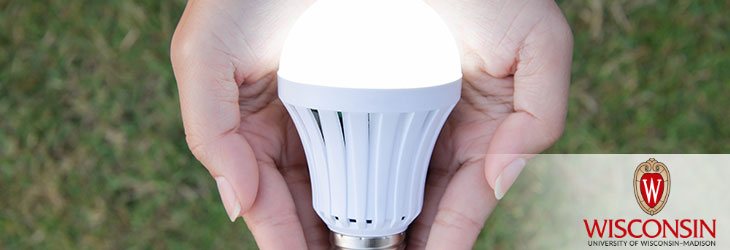Clean Technology

Environmentally Green Glue
WARF: P130276US02
Inventors: Srinivasan Damodaran, Dani Zhu
The Wisconsin Alumni Research Foundation (WARF) is seeking commercial partners interested in developing soy flour-based wood adhesive that meets industry standards and is petrochemical-free.
Overview
Formaldehyde-based adhesives have been used to make interior plywood and particle board for decades. These synthetic adhesives, which are derived from petroleum, are inexpensive and perform well. However, unhealthy emissions from such adhesives have been the target of stringent nationwide regulation.
There is a critical, regulation-driven need to find alternatives that work effectively but don’t emit dangerous vapors. Especially desirable is a new type of adhesive made from renewable resources instead of fossil fuels.
Soy protein is one promising candidate. But until now, efforts have failed to yield an adhesive with acceptable strength and water resistance.
There is a critical, regulation-driven need to find alternatives that work effectively but don’t emit dangerous vapors. Especially desirable is a new type of adhesive made from renewable resources instead of fossil fuels.
Soy protein is one promising candidate. But until now, efforts have failed to yield an adhesive with acceptable strength and water resistance.
The Invention
UW–Madison researchers have developed a process to transform soy flour into a strong, environmentally safe wood adhesive.
In the process, a suitable reagent is used to phosphorylate the flour’s lysine amino acid residues. The phosphorylated flour then is mixed with an oxidizing agent that drives the formation of cross-linking bonds. This improves the flour’s adhesive properties. Unwanted salts created in the process can be removed.
Flours of other legumes and/or oil seed crops (e.g., flax, canola) are suitable as well.
In the process, a suitable reagent is used to phosphorylate the flour’s lysine amino acid residues. The phosphorylated flour then is mixed with an oxidizing agent that drives the formation of cross-linking bonds. This improves the flour’s adhesive properties. Unwanted salts created in the process can be removed.
Flours of other legumes and/or oil seed crops (e.g., flax, canola) are suitable as well.
Applications
- New adhesives for plywood, particle board and potentially other products
Key Benefits
- Realistic substitute for petrochemical glues
- Good wet/dry binding strength and water resistance
- Safe, cheap and environmentally ‘green’
- Could improve LEED status of buildings
Stage of Development
The researchers found that hot pressing wood and the adhesive at 140 degrees Celsius increased wet shear strength to 3.15 MPa, which exceeds the industry standard.
Tech Fields
For current licensing status, please contact Mark Staudt at [javascript protected email address] or 608-960-9845